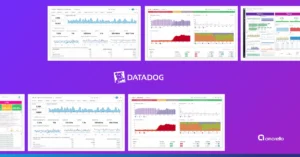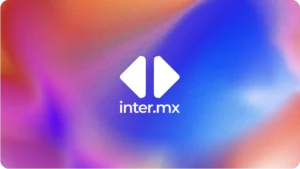The Day of Indigenous Resistance represents an important opportunity to reflect on our past, act on our present and build a more inclusive and just future for all. In this context, I would like to take the opportunity to put into perspective the role of technology as a tool to assist in the preservation of indigenous cultures.
Indigenous Peoples and Technology, Challenging Stereotypes
When talking about the relationship between indigenous peoples and technology, it is common to observe the existence of the prejudice that there is a certain incompatibility in this relationship. However, this idea is nothing more than a myth. Indigenous peoples have used millenary technologies, pioneering their implementation, and are now adopting new ICTs to reaffirm their identity with pride and dignity.
You may like: Science, Data, Cloud and Rock & Roll.
This is why ICTs and technology in general represent both a challenge and an opportunity to preserve the cultural heritage of indigenous peoples, to reaffirm their identity, and to keep alive their traditions, worldview and languages, thus helping them to resist the phenomenon of cultural appropriation and the overwhelming negative impact of capitalism.
Innovate to preserve?
Currently, we experience a reality where immediacy is normative, and with it it is natural to seek to simplify things, this has accelerated the fading of native languages, along with ancestral knowledge and beautiful ways of understanding life. Faced with this situation, it is crucial that we take innovative measures and use technology to revitalize and strengthen indigenous cultures and languages, thus safeguarding an invaluable heritage.

A good first approach is to examine Intercultural Bilingual Education and integrate the use of ICTs as a support tool, rather than perceiving them as a barrier in the formative processes of indigenous peoples. However, it is equally valuable that we overcome our fears and adopt open and non-judgmental approaches when interacting with indigenous communities.
See also: Green innovation, Google Cloud towards a sustainable horizon.
We should not be at all surprised to find young people from these communities interacting on social networks and creating memes in their indigenous languages, such as the memes in the Q’eqchi Mayan language in Guatemala. This phenomenon exemplifies how indigenous languages have adapted and evolved in the digital context.
Art and Technology, A Fusion that Impacts the Revitalization of Indigenous Cultures
The key to adopting an open approach, free of prejudice, lies in providing flexible solutions that allow the indigenous communities themselves to lead the way towards the revitalization of their cultures, traditions and languages, leaving aside protagonist and paternalistic roles, since no one understands the needs of indigenous peoples better than they themselves do.
Now read: Cloud gaming, innovations and possibilities, IT industry in gaming.
This is where art becomes an exceptional ally by merging with technology, providing a space for authentic expression. This collaboration enables the voices of the younger indigenous generations, who play a key role in the preservation and resilience of their cultures, to be heard.
YouTube perfectly exemplifies this process by providing a global space where artists can authentically express their art while respecting their culture. A notable case is music, which fuses rhythms such as rap and rock in indigenous languages.
Films dubbed into Quechua in Peru illustrate that indigenous languages are gaining importance and legitimacy in new spheres. This synergy between art and technology offers young indigenous generations a space where they can use their language without fear of being judged for grammatical, pronunciation or writing issues, as unfortunately happens in the school environment.
Inspiring examples of Indigenous Cultural Preservation through Technology
The creative combination of technology, pedagogy, history and other disciplines is proving to be an effective resource in the crucial work of preserving rich indigenous cultures, revitalizing their languages and fostering their traditions. Some outstanding examples include:
- Duolingo: Reviving the K’iche’ Mayan Language
Duolingo has expanded its horizons and now offers lessons in the K’iche’ Mayan language. This language learning platform provides the opportunity for people from all over the world to learn this language, playing a fundamental role in the preservation of the Mayan language and culture. - OEI Mobile App: Five Native Bolivian Languages Within Everyone’s Reach
The Organization of Ibero-American States for Education, Science and Culture (OEI) has developed a mobile application that allows people to learn five native Bolivian languages: Aymara, Quechua, Guarani, Uru-Chipaya and Chané. This initiative promotes the revival and vitality of these indigenous languages. - Google Arts & Culture: Virtual Immersion in Mayan Culture
Google Arts & Culture offers virtual immersion experiences in Mayan culture, allowing people to virtually visit Mayan archaeological sites and learn about their rich cultural heritage. This platform plays an essential role in the dissemination and understanding of Mayan culture around the world.

Culture, Innovation and Community: The Key to Cultural Preservation
Technology, in the hands of indigenous communities, is a powerful tool for preserving and revitalizing their cultures. However, to ensure that innovation is an instrument of inclusion and justice, it is essential that efforts are rooted in the needs and aspirations of these communities. In this way, we prevent technology from becoming a vehicle for exclusion and assimilation, allowing indigenous cultural identities to flourish.

Some recommendations to consider in order to promote an effective use of technology as a tool for inclusion include:
- Involve Communities: The active participation of indigenous communities in the development of technologies is essential. This ensures that technology solutions are tailored to the specific needs of each community.
- Training: Providing training to indigenous communities in the use of technologies is a crucial step. This allows communities to take full advantage of the potential of technology and incorporate it effectively into their daily lives.
- Education: Promoting the use of technologies in indigenous schools and universities is critical to equip future generations with the skills necessary to interact with technology effectively.
If you are interested in this topic, I encourage you to learn about MOJIMa project dedicated to amplifying the voices of indigenous youth in Mexico. Together, we can build an inclusive digital future that respects and celebrates cultural diversity – join this important mission and share with friends!



